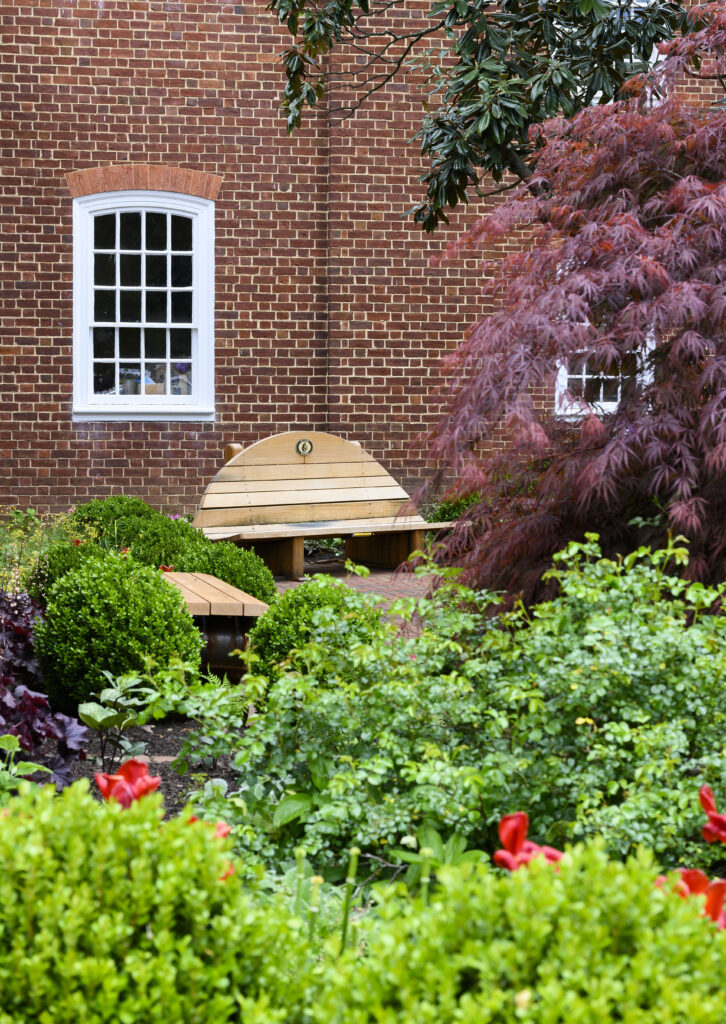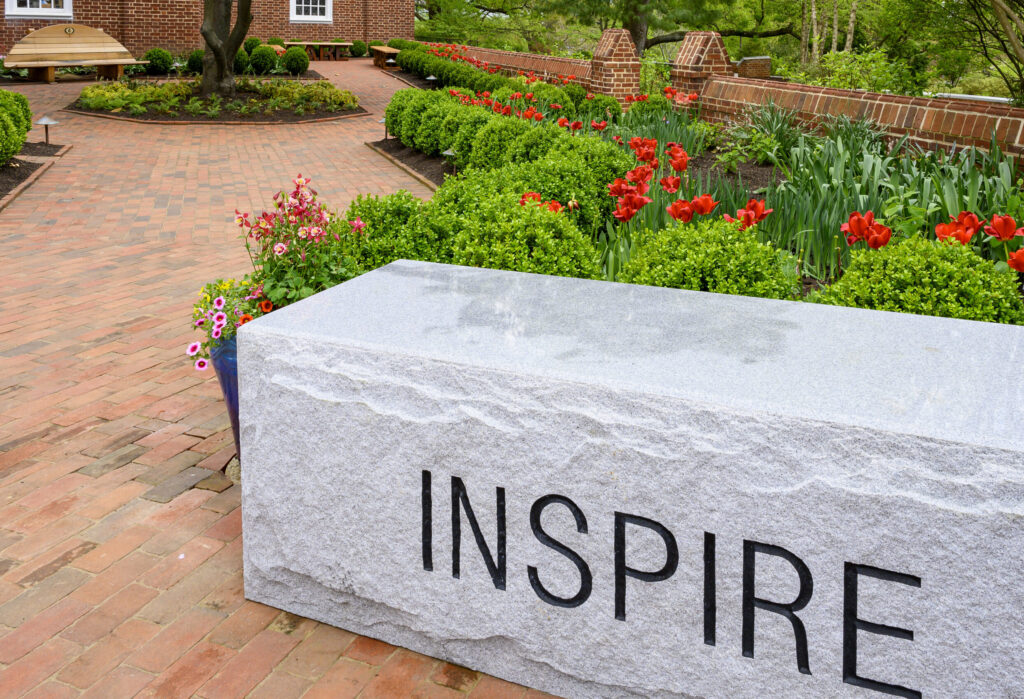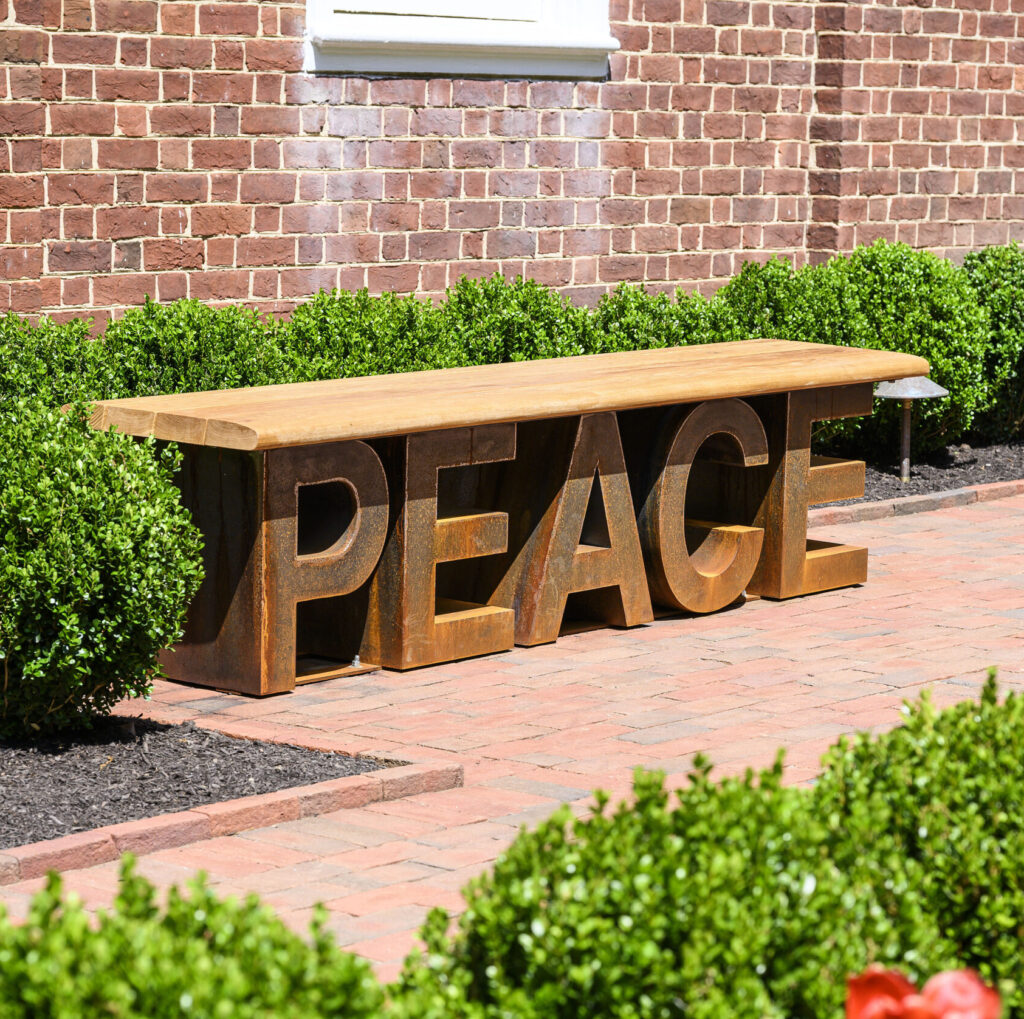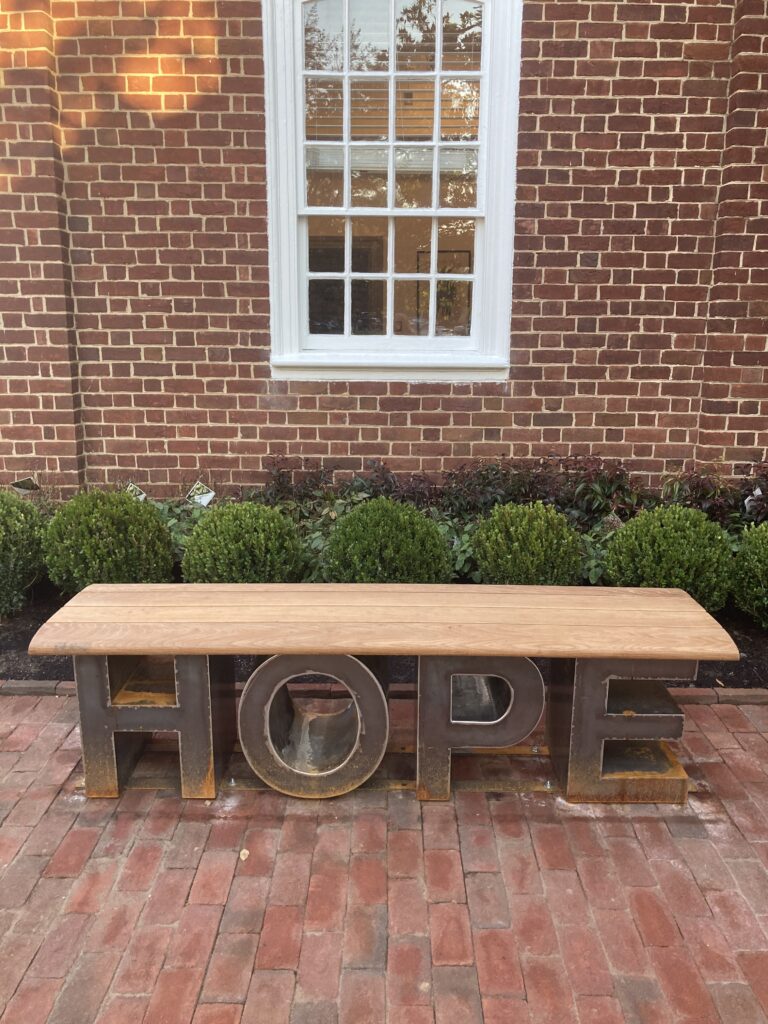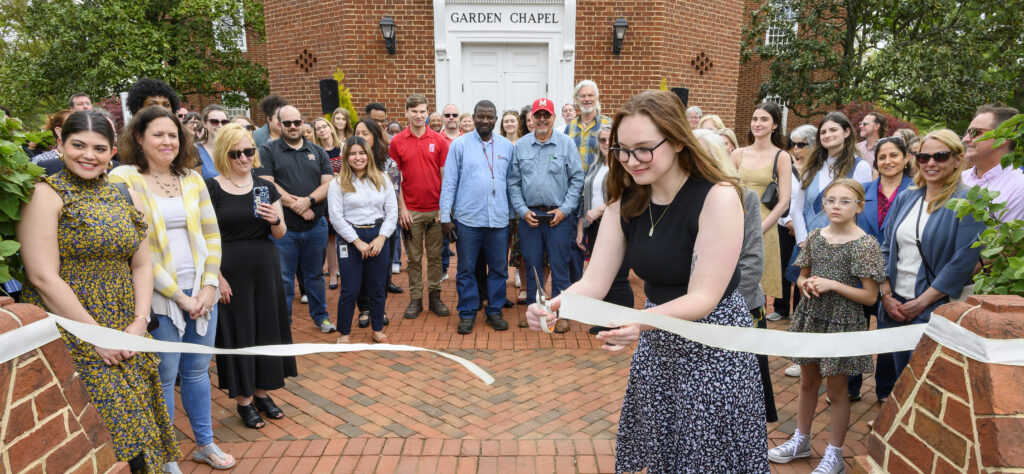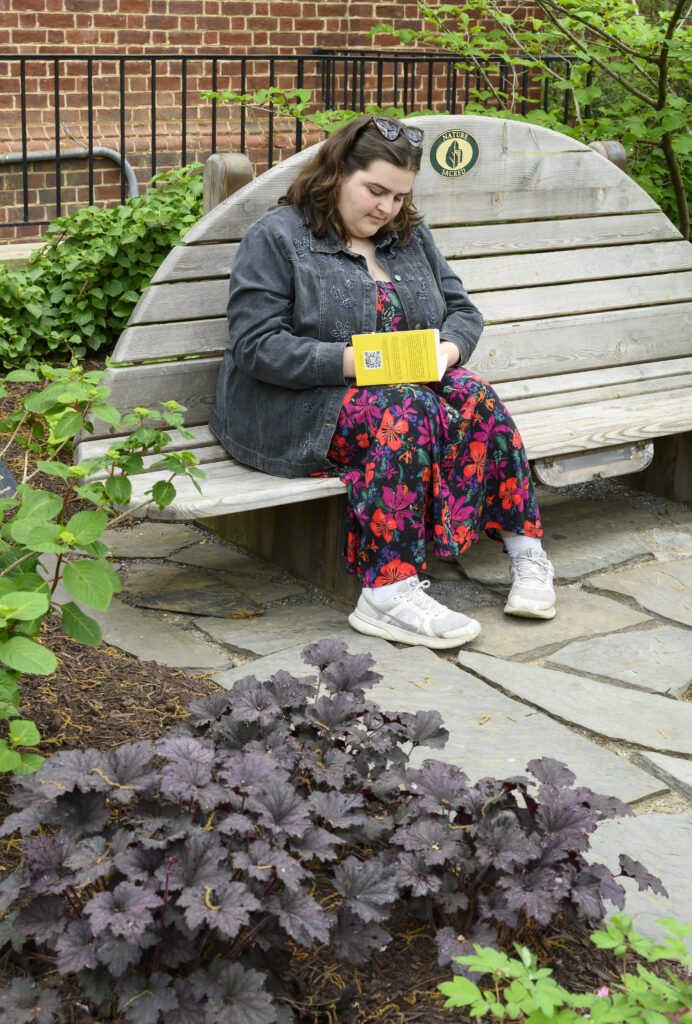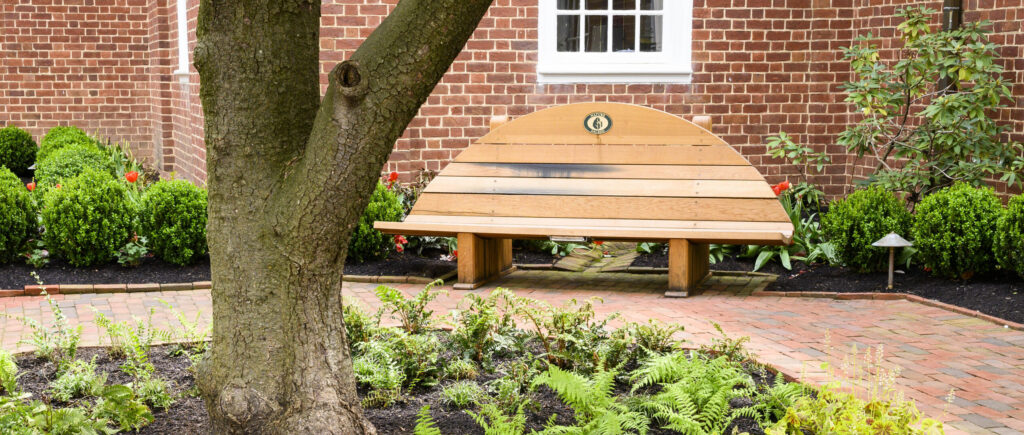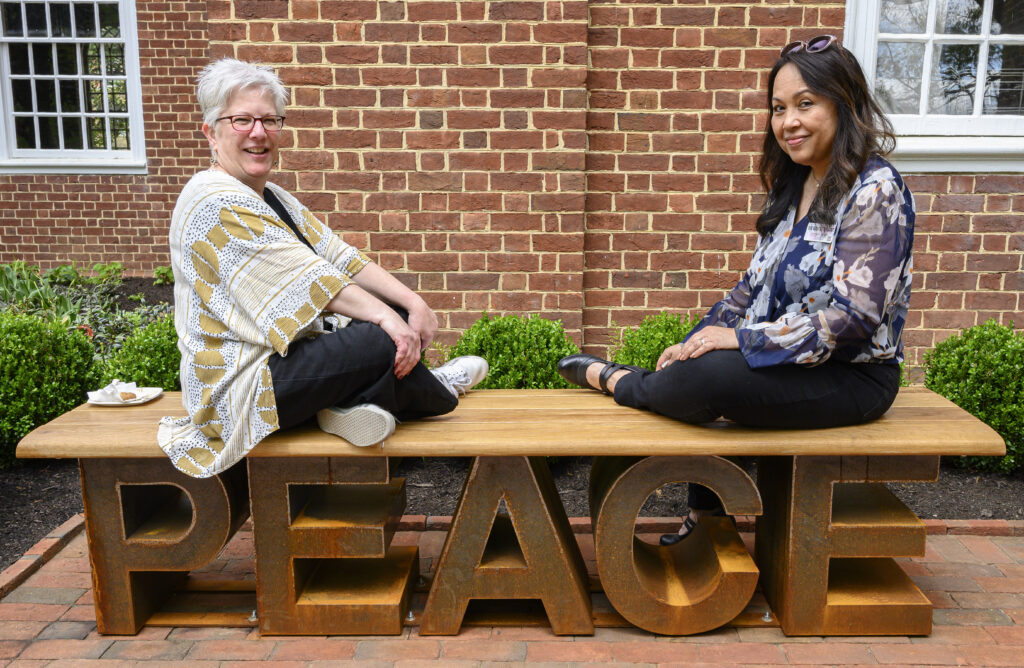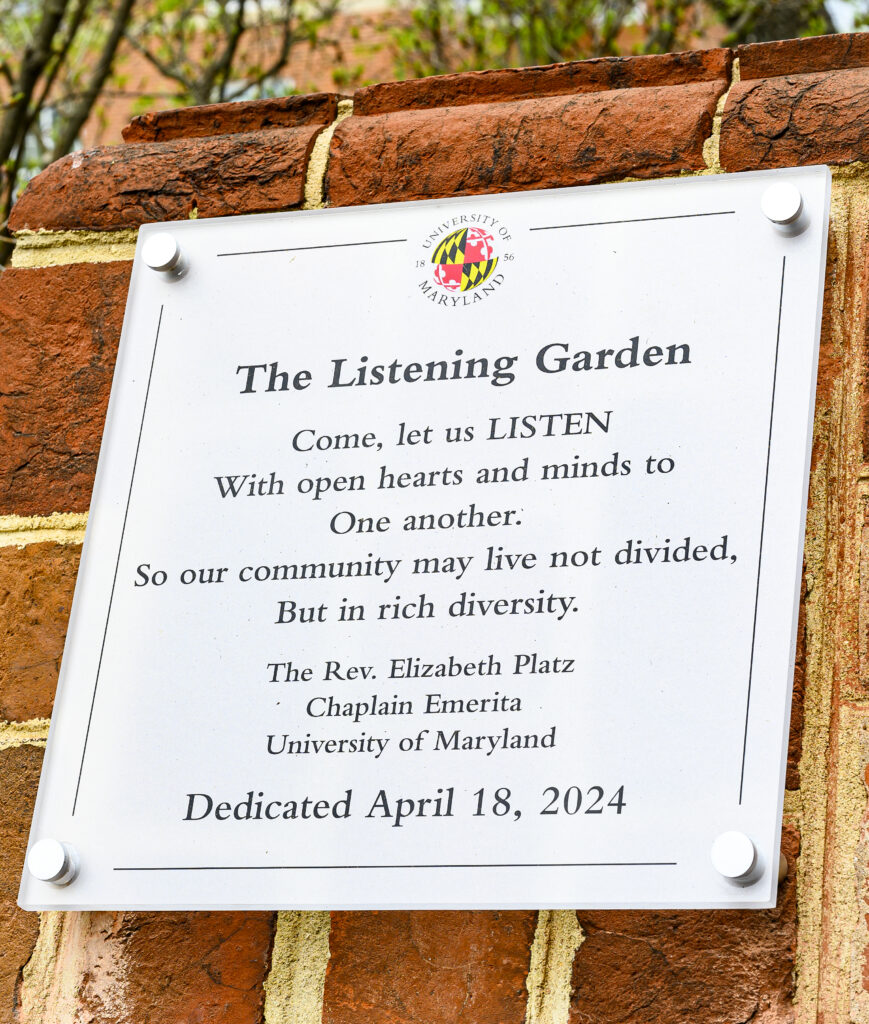The University of Maryland, College Park is Maryland’s flagship university and one of the nation’s preeminent public research universities. It is a global leader in research, entrepreneurship and innovation, and home to more than 40,700 students, 14,000 faculty and staff, and nearly 400,000 alumni all dedicated to the pursuit of Fearless Ideas. They are committed to social entrepreneurship as the nation’s first “Do Good” campus. The University of Maryland has for many years been home to a Sacred Place, the Chapel Garden of Reflection and Remembrance, the concept for which originated in the students’ response to processing and understanding the loss left by national tragedies, such as the Virginia Tech massacre and the terrorist attacks of September 11. Now, the garden is a crucial part of the campus’s wellbeing infrastructure, and a source of solace for many students.
Building on this work, the half-acre landscape directly beyond the Garden Chapel is in the process of being transformed through evocative plantings and unique “word” benches designed to prompt conversation. The university community felt that spending time in natural places, while always important to human well-being, was of special prominence at this point in time, in a world where students were trying to re-find equanimity and happiness post-COVID-19 and where conversations had become more fraught with polarization. The captivating Listening Garden will provide a fitting companion to the adjacent Chapel Garden of Reflection and Remembrance. The journey within, an integral characteristic of the Garden of Reflection and Remembrance, leads naturally and beautifully to the essential work of coming together in community for dialogue and greater understanding through discussion and conversation.
Undergraduate students in a landscape design class offered the initial design ideas for this space; they shared these early concepts/plans in classroom sessions with Stamp and Chapel staff and landscape design faculty. These ideas have been refined through the ongoing efforts of students, landscape staff, student affairs staff, chaplains, and an outside design consultant who are part of the Listening Garden planning committee. The name of this new Garden space as well as the leading words associated with some of the benches (“listen” and “story” are two examples) have been determined in part through campus surveys shared on social media. The garden is a fitting continuation of the Chapel’s long-time commitment to dialogue across faiths and ways of being that bring about peace.
Visitors will have the opportunity to enter the Listening Garden through a graceful metal arch threshold adorned with plant life. Through the creation of additional brick paving, two large nodes on either side of the Garden Chapel exterior doors now offer enlarged plant beds and greater open space for seating and programming. Favorite and long-established trees, like the magnolia and crepe myrtle, are remaining in the new Garden, along with smaller natural components, like the viburnum bushes. Benches, placed in groupings, will offer ways for between two to six Garden guests to congregate comfortably. The two Nature Sacred Benches, one placed in each half of the new garden, will provide an oasis for quiet conversation between two seated guests or an opportunity for visitors to journal about their experience dialoguing in nature. The classic and simple wooden benches will complement the metal and granite “word” benches as well as provide a design link to the Garden of Reflection and Remembrance. Student organizations, faculty members, chaplains, and staff will be encouraged to utilize this unique space for programming, events, meetings, faith-based sessions, and classes. The Garden also will be available for drop-by, unscheduled gatherings. These occasions, formal and informal, offer students the opportunity to grow in their listening skills and their ability to communicate with each other as well as simply enjoy being out in nature.
Design Team
Robert Lee Tjaden II, landscape architect, Tjaden Design Associates, LLC

